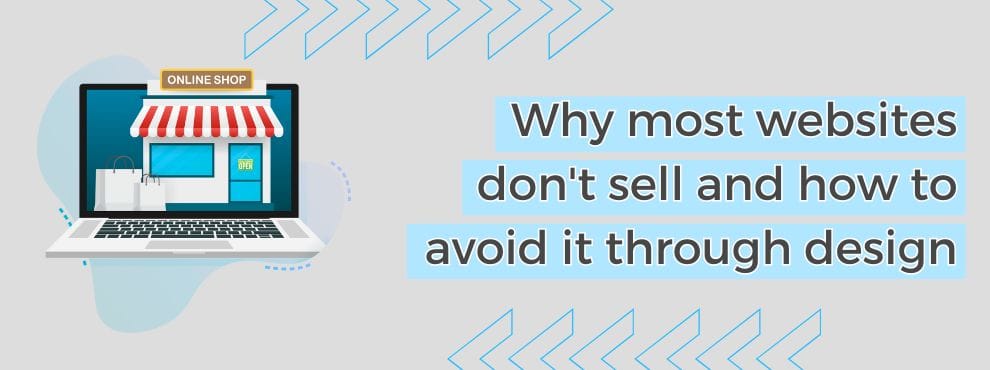Having a website today is almost a basic requirement for any business that wants to stand out in the digital environment. However, many companies make the mistake of thinking that just by having an online presence, sales will come on their own. The reality is quite different. There are thousands of websites that, although visually attractive, do not fulfill their most important function: converting visitors into customers. Why does this happen? The answer lies in the design, but not only in the visual, but in everything that has to do with the user experience and the strategy behind the structure of the website.
Table of contents
Focusing on the company, not the customer
One of the most common mistakes is that many pages are focused on talking about the company instead of talking to the customer. They use generic phrases such as “we are leaders in the sector” or “we have more than ten years of experience”, without stopping to think about whether this really solves the user’s concerns. Visitors enter a website because they have a need or a problem they want to solve, and if they do not quickly find a clear answer to their question “what can you do for me?”, they are likely to close the tab and look elsewhere. That’s why it’s critical that web content is customer-focused, speaks their language and highlights the specific benefits of what’s being offered, beyond simply describing services or showcasing the company’s resume.
Lack of clear objectives and visible calls to action
Another factor that greatly limits conversion is the lack of a clear objective. Many websites do not define the main action they want the user to perform. This generates confusion, and in an environment where attention is limited, that means missed opportunities. In addition, in many cases, calls to action (CTAs) are not very visible or poorly written. A website without a button that clearly invites you to “Request a quote”, “Schedule a call” or “Buy now” is like a store without a counter. The user has no clear guidance on what the next step is and, therefore, simply leaves. The design has to facilitate that path naturally and consistently from the time the visitor lands on the page until they make a decision.
Structure also plays a key role. Many websites have confusing, cluttered navigation or complicated menus. This creates friction and causes the user to get lost, especially if they are accessing from a mobile device. A good information architecture is one that allows you to find what you are looking for in a few clicks, presents the content in a hierarchical way and offers an intuitive experience. Added to this is the importance of visual design. Although it may not seem like it, the appearance of a website directly influences the perception of professionalism and trust. An outdated website, with unharmonious colors, hard-to-read fonts or pixelated images can make a potential customer decide not to go ahead, even before reading a single line of text.
Technical issues: speed and adaptability
But it’s not all about aesthetics. Loading speed and adaptability to mobile devices are equally or even more important than visual design. Today more than 60% of web traffic comes from cell phones, so if a site does not adapt correctly or takes more than three seconds to load, the chances of the user leaving without interacting are extremely high. These types of technical details should be considered from the moment the web design is planned, and not as a later correction. Having a fast, lightweight and responsive website is not a luxury, it is a basic necessity in today’s world.
Another key aspect that many websites ignore is trust. When a user doesn’t know a brand, they need signals that reassure them that they are making a good decision. The absence of testimonials, reviews, success stories or simply clear guarantees of purchase, can make the visitor hesitate and not complete an action. Trust is also built with small details: a neat design, visible contact information, clear policies, and visual elements such as security seals or certificates. The more transparent and professional the website is perceived to be, the more likely it is to generate conversions.
Lack of a clear value proposition
In addition, we cannot forget the importance of the value proposition. Many websites do not communicate directly what makes them different or why someone should choose them over the competition. The value proposition should be clearly visible at the top of the site, even before scrolling down, and should concretely answer the question “what solution do you offer me and why should I trust you?”. This lack of clarity is also reflected in the texts. The content is often poorly written, generic or full of technicalities that do not connect with the user. A good copywriting strategy can make the difference between a lost visit and an effective conversion.
Conclusion
In short, a website that does not sell does not always need more traffic or investment in advertising. Many times, what it needs is a deep revision of its design, structure and content. It is essential to understand that web design is not only a visual issue, but a combination of aesthetics, functionality, usability and strategy. A well-designed website should guide the user, generate confidence, communicate clearly and facilitate the action we want them to perform. If your website is not meeting these objectives, it’s time to ask yourself what you can improve. Because at the end of the day, a website is not just a letter of introduction: it is a sales tool, and if it is well done, it can become your best sales tool.




Deja un comentario